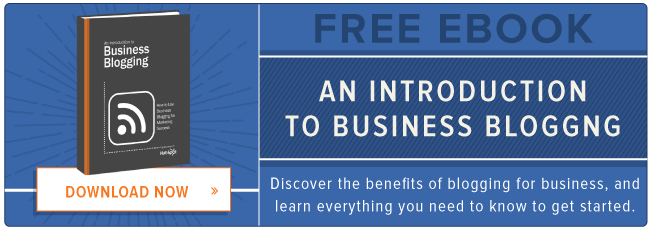 It’s critical to have a goal in mind before writing a single word of a blog post. For eCommerce sites that thrive through online sales, goals of each post should be different than for a B2B blog’s goals. Great blogs set tight goals for each post, and tailor their content and calls-to-action to each post’s specific goals – blogs on eCommerce sites are no different. Tailor your eCommerce blog content, set up the blog to sell your products, and measure your results fanatically.
It’s critical to have a goal in mind before writing a single word of a blog post. For eCommerce sites that thrive through online sales, goals of each post should be different than for a B2B blog’s goals. Great blogs set tight goals for each post, and tailor their content and calls-to-action to each post’s specific goals – blogs on eCommerce sites are no different. Tailor your eCommerce blog content, set up the blog to sell your products, and measure your results fanatically.
1. Grow Blog Subscribers and Reach
Every publication needs readership. For eCommerce sites, your blog readership is your customer base: past, present, and future. And particularly if you sell products that have an engaging backstory, use case, or associated cause, using posts to gain subscribers is a worthwhile goal. Specifically, contest or giveaway posts can be useful for this goal. These types of posts can require visitors to subscribe to the blog, tweet about the post, and add a comment to the blog to enter the contest. In turn, these posts can really spike your subscriber numbers.
Metric to watch: Track email and RSS subscribers in a chart that has a postdate overlay; see which posts and contests are most popular in growing your readership.
2. Generate Immediate, Same-Day Sales
This is the most enticing blogging goal for eCommerce businesses but is likely the most elusive, too. Same-day sales are difficult to generate from content-rich (i.e. non-promotional/sale) blog posts – let’s be honest! However: as you grow your blog’s readership and each post is immediately presented to a larger readership, you can leverage your ability to place product links and promotions in front of your growing tribe.
Metric to watch: Ensure your blog analytics are integrated with your eCommerce funnel to track blog-to-transaction visits. Track same-day sales for products promoted and linked from your post.
3. Attract Inbound Links
Another attractive goal for a blog post, but not specific to eCommerce. Create remarkable, strong-minded, or novel content about your products or industry to better position yourself for sharing and inbound links. The impulse of many eCommerce bloggers is prejudiced against this goal; “it doesn’t showcase my products” or “it doesn’t apply to my products” are common objections. A touch of outside-the box-thinking can go a long way, and examples like BlendTech’s Will It Blend? are fantastically creative positioning of a potentially dull product. It's also important to note that blog posts are much more interesting to the online world and therefore much more linkable than product or category pages, too.
Metric to watch: Track links from net new domains as well as new/additional links from previously linking domains. Track referral traffic and sales from these links over time.
4. Improve Long-Tail Organic SEO
For eCommerce sites specifically, blogging provides a useful way to rank for longer-tail searches that product or category pages can’t or won’t rank for. As an example: a blog post title like: “Perfect Candy for Mom: Tasty Dark Chocolate Christmas Bark” will help improve long-tail keyword rankings over a product page that is optimized around “dark chocolate bark Christmas candy”, because blog posts let you target a more diverse group of keywords. You should look to expand the keyword footprint of your products with varied post titles and other on-page SEO. And as mentioned above, blog posts are by their nature more likely to attract links than product pages; this nets you positive SEO effects for the blog pages and the linked pages from your blog.
Metric to watch: Understand which specific page(s) rank for which specific keyword(s). Track traffic on these keywords to those pages over time.
5. Generate Long-Term, Lagged Sales
Blog posts are persistent - they stick around over time and continue to attract traffic, links, and attention (one of HubSpot's most popular blog posts is from mid-2007!). Create a well-SEO’d article today and it will attract traffic over a very long period of time in the future. If you are setting up your eCommerce blog posts for conversion, it will drive traffic and sales through your product pages for years to come.
Metric to watch: Just like with same-day sales, ensure your blog analytics are tightly integrated with your eCommerce funnel. Track sales generated from products or categories promoted in your post and calculate a conversion rate from years of traffic.
Vary your eCommerce blogging strategies, determine the best content-audience fit for your products, and measure, measure , measure . Now get writing, promoting, and selling!
Photo Credit: Fosforix

.png?width=112&height=112&name=Image%20Hackathon%20%E2%80%93%20Horizontal%20(67).png)










